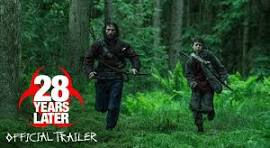Ride or Die takes a wrong turn
- Staff report
- Apr 21, 2021
- 2 min read

By ALEXUS CHARAY - Ride or Die will be a hit or miss for some people. Personally, I side with those who aren't happy with the film. With questionable character build-up and a dragged-out storyline, the movie was not for me.
Ride or Die is a Japanese Netflix film directed by Ryūichi Hiroki, adapted from the graphic novel Gunjō. I have not read Gunjō, so this review will solely be based on my impression of the movie rather than how accurately it sticks to the original material. The film follows Rei Nagasawa and Nanae Shinoda, played by Kiko Mizuhara and Honami Satô, respectively. The two women are on the run from the police after Rei killed Nanae's husband, who had beating and abusing his wife frequently. Trying to escape from the crime they have taken part in, both women start to build their bond with one another and stick together, trying to stall the inevitable.
The story is basic: two people are trying to escape and hide from the cops. The film is self-aware of this, though. Ride or Die knows that this story has been told before, so the movie mainly focuses on Rei and Nanae's new daily activities and their relationship. In some cases, it seems like the women aren't on the run and are just enjoying themselves as if it was a typical day. The progression of the story comes at a plodding pace. The repetitive cycle of the two women arguing got tedious and made me question when something new would happen. I will admit, though, that some scenes had made my eyes widen, and things got intense extremely fast.
Moving on, the characters felt static and not wholly thought out: seeming to only have a presence in this specific moment and not anywhere else. People resonate with characters when they understand their motive and background, substance, if you will. Ride or Die gives its characters basic surface-level traits with little consistency. Some of the motives for Rei and Nanae are questionable and vaguely clear at best. The movie heavily relies on the idea that you would do anything for the person you love. Still, there is a way to convey this message that doesn't eliminate a character's whole personality and history.
This movie does have some likable traits, though. First, and most obviously, is representation. In the film industry, we have seen a fight for more people of different ethnic backgrounds and sexual orientations to be shown in movies. Making the main character in Ride or Die a lesbian was a good move for this representation. Struggles like peer rejection and familial disapproval are present, and it is nice to see the difficult components of being a part of the LGBTQ+ community. The best part of the movie was the cinematography, for sure. Some of the shots were breathtaking and left me simply amazed. If you watch this movie, the scenic images will be on your list of positives for Ride or Die.
Beautiful cinematography shots and LGBTQ+ representation were not enough to save Ride or Die from being a bland and sometimes messy film. Overall, I would give this film two stars out of five, and I wouldn't classify the movie as a revolutionary tale that needs to be seen by all.








Comments